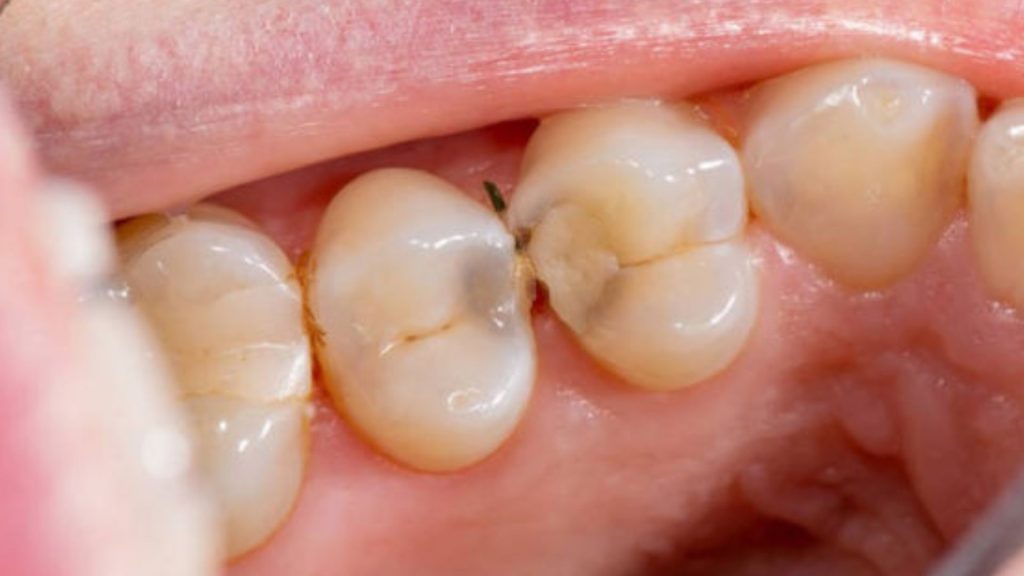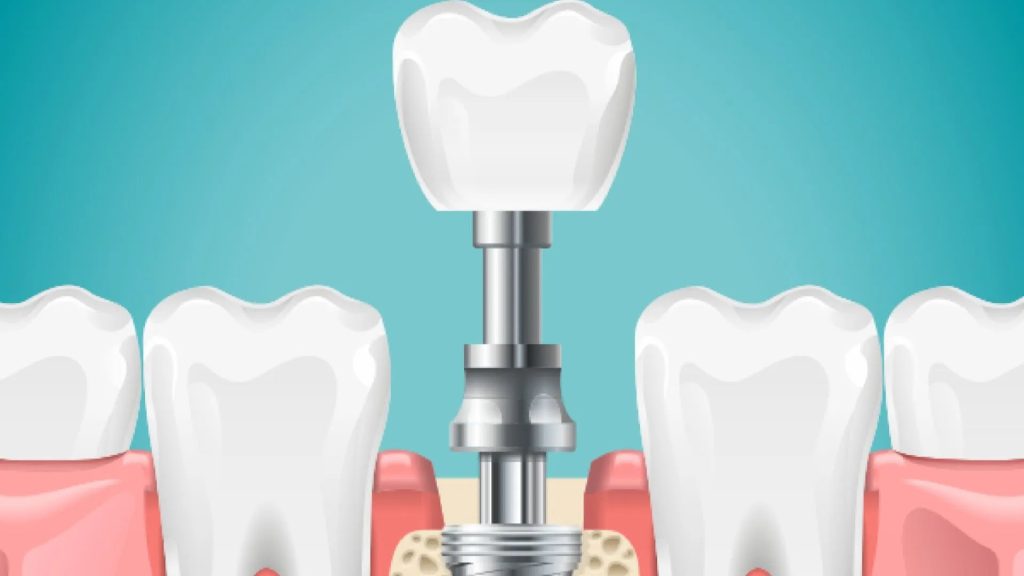Cavity between teeth, also known as interproximal cavities, is a common dental issue that affects many individuals. When decay arises in the tiny crevices between neighboring teeth, tooth structure deteriorates and oral health issues may arise. If left untreated, these cavities may cause pain, sensitivity, and tooth loss. Understanding the cavity between teeth origins, symptoms, and treatments is crucial for good dental health.
In this post, we’ll examine the cavities between teeth’s causes, symptoms, and treatment options. This detailed advice can help you properly treat cavities between teeth, whether you’re a dental novice or an expert. Lexplore cavities between teeth and take preventative measures to get a cavity-free, beautiful smile:
Cavity Between Teeth – What Is It?

Interproximal cavities, or cavities between the teeth, are pits or cavities that form between two neighboring teeth. Plaque bacteria acidify tooth enamel and dentin, weakening and disintegrating them. Additionally, the gap between teeth is called a “proximal cavity” or “interdental cavity.”
In conclusion, you should see a dentist about this problem right once to protect your teeth.
What Causes Cavity Between Teeth?
Let’s find out what creates cavities between teeth. To prevent and cure dental cavities, it’s crucial to understand their etiology. Let’s examine how this affects our dental health and the dental variables and oral care practices involved:
- Dental plaque: Plaque is a transparent, slimy film of bacteria, organic materials, and mineral salts on teeth. Acids produced by plaque bacteria from sugar and starch in diet are very corrosive and contribute significantly to tooth decay.
- Interdental space: Triangular spacing between two teeth. Splitting teeth helps germs and plaque build, increasing cavity risk.
- Tooth morphology: For instance, germs and plaque might build and be difficult to clean if the cleavage between the teeth is very small or irregular.
- Improper oral care habits: Not brushing long enough, flossing, using fluoride toothpaste, or doing proper dental care might raise your risk.
- Genetics: Your risk may rise if a family member has cavities between teeth.
In short, the foregoing conditions typically promote bacteria and plaque growth, damaging enamel and developing cavities between teeth.
Symptoms Of Interproximal Cavities
To better comprehend the cavity between teeth, let’s look at its symptoms. It may make life uncomfortable. By keeping an eye out for this sign, we can go to the dentist as soon as possible for treatment and prevent further damage to our teeth:
- Temperature sensitivity: Cold, spicy, and sweet meals and beverages may hurt or sting.
- Pressure sensitivity: The fissure between your teeth may hurt when you floss or brush.
- The cleft between teeth: The teeth may have a pit or cavity. White, brown, or black pitting.
- Plaque: Plaque or white or brown mucus may be seen in the cleft between the teeth.
- Increased plaque build-up: Plaque and bacteria in the tooth cavity may cause thick plaque, gingivitis, and tooth decay.
Therefore, if you have any of the aforementioned symptoms, particularly temperature sensitivity and tooth splits, consult your dentist for evaluation and treatment.
How To Avoid Cavities Between Teeth?
It’s crucial to take preventative measures to avoid tooth decay. Protect your teeth and gums with these tips:
- Daily oral care: Use a gentle toothbrush and fluoride toothpaste twice a day. Use floss or a middle tooth care tool to clean your teeth frequently.
- Use fluoride mouthwash.
- Avoid sugary meals: Avoid sugar, particularly sugary beverages. Rinse or drink water to minimize acid damage to tooth enamel.
- Dietary adjustments: Oral health benefits from a balanced, nutrient-rich diet. Avoid bread, sweets, and natural sugars.
- Routine dental check-ups and cleanings: Dental checkups and cleanings are essential. Your dentist will clean your teeth, check for cavities, and provide you with oral hygiene advice.
- Use sulfur: Sulfur (xylitol) can help prevent plaque and cavity formation. You can use xylitol-containing gum or other products containing this ingredient.
- Adjust for risk factors: Try to limit the detrimental effects of smoking, alcohol usage, and health issues on your teeth.
So, keep in mind that a healthy mouth helps maintain a healthy oral system, which includes preventing cavities between teeth. Visit your dentist often and follow the aforementioned steps for healthy teeth.
Methods Of Treatment Cavity Between Teeth
Timely treatment is crucial when a cavity between teeth is detected to avoid further damage and preserve oral health. It is crucial to one’s oral health to be aware of proven and studied therapies. Let’s learn about dental remedies for tooth cavities based on scientific research:
Dental Filling

If you have a cavity in between your teeth, this is the standard treatment. In this procedure, pits and cavities between teeth are smoothed out and filled with a composite resin. Interdental cavity therapy using resin composite filling materials was shown to be successful and durable in a 2017 “Operative Dentistry” research.
Orthodontic Treatment
When teeth are crowded, braces may be used to make room for them. For better oral hygiene and the avoidance of cavities, braces may realign your teeth and open up the space between them.
According to research published in the “American Journal of Orthodontics and Dentofacial Orthopaedics” in 2020, wearing braces may help you take better care of your teeth and gums.
Dental Implant

When the decay between teeth has reached the pulp of the tooth and can’t be filled, a dental implant may be the best option. This procedure attaches a denture to the jawbone implant. The long-term efficacy and safety of dental implants for the restoration of missing teeth were recently described in a research published in the “Journal of Oral Implantology” (2019).
To sum up, the severity of the decay, the tooth’s location, and the patient’s overall oral health will all play a role in determining the most appropriate treatment option. Thus, it’s important to see a dentist before choosing a cavity between teeth therapy.
Conclusion
We learned about cavities between teeth and their complications in this article. We have learned what leads to cavities, what the symptoms are, and how to cure them. At the same time, we have learned the best practices for preserving our teeth and gums to forestall the onset of tooth decay.
Regular visits to the dentist and the Dental Check-up service at Spring Orchid dental clinic are good for your oral health. Spring Orchid dentistry clinic has expert dentists and sophisticated technology to provide patients with the finest care. At Spring Orchid dental clinic, you’ll get a thorough dental checkup, including dental X-rays to spot issues early. Concealed and thorough plaque and tartar removal.
In sum, trusting Spring Orchid dentistry clinic and getting regular dental checkups protects your teeth. This prevents tooth decay and preserves a confident grin.
FAQs
Can You Repair Cavities Between Teeth At Home?
It’s possible. In certain circumstances, cavities between teeth may be repaired at home. However, self-treatment only applies to mild and non-serious illnesses. Consult a dentist if the cavity has spread or other major issues.
Here are some home remedies for cavities between teeth:
- Use a fluoride toothpaste.
- Floss or Middle Care.
- Use products containing xylitol.
However, seeing a dentist is recommended to guarantee an efficient treatment of cavities. Dentists may assess cavity damage, propose treatment, and provide at-home oral care advice.
What’s The Best Therapy For Kids With Cavities Between Teeth?
Children with cavities between teeth need adequate treatment to maintain their dental health. This case’s best kid therapies are:
- Dental Bonding: When a youngster has a cavity between their teeth, this is a usual course of therapy. Plaque and decayed regions are cleaned away, and then the tooth is resurfaced with a composite material that looks and functions like enamel. This procedure doesn’t need teeth grinding and is painless for kids.
- Fluoride treatment: Fluoride protects teeth against cavities. Dentists may apply fluoride gels or sprays to children’s teeth. This protects enamel from acid and germs.
In short, don’t forget to schedule frequent visits to the dentist for your children so that any tooth issues may be caught and treated early. To improve the child’s dental health, the dentist will provide customized advice and treatments.
Should Pregnant Women Undergo Cavity Between Teeth Treatment?
Pregnant women should see the dentist to address tooth cavities. Dental issues may harm you and your baby, so it’s crucial to maintain good oral health throughout pregnancy.
Moreover, pregnancy brings about several hormonal changes in the body, and they might raise the likelihood of tooth decay and other dental issues. Treatment might avoid an ulcer from spreading if you have a cavity between your teeth.
However, consult with your dentist and obstetrician before treating cavities during pregnancy to protect the fetus. They will assess your dental health, provide therapy, and advise you on infant safety.





